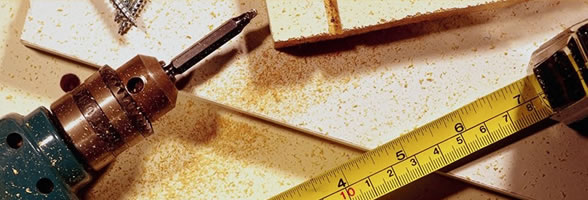
Genetics and DNA/RNA
Genetics and Evolution
Species: A group of organisms that can interbreed with each other but not with another to produce fertile offspring.
Variation: In a group of similar organisms, each member shows different characteristics.
Types of variation:
- Acquired/learnt e.g. counting skills
- Inherited e.g. eye colour
Heredity: passing on of features to offspring by gens- genetic inheritance e.g. number of toes
Gene expression: the way genetic information is decoded and used to make a protein e.g. height depends on genes and diet of the person
A gene is a unit of heredity i.e. a section of DNA that causes protein production.
Chromosome Structure:
- 40% DNA & 60% protein (histone)
- Genes-3% of DNA in cells
- Non-coding DNA- DNA that does not code for a protein
DNA structure:
- 4 bases
- Adenine –Thymine
- Guanine-Cytosine
- Interwoven with protein for security
- Nucleotides

DNA Replication:
- Double helix unwinds as enzymes break hydrogen bonds between bases
- Bases enter nucleus from cytoplasm. They pair with their complementary base pairs. DNA rewinds into two helices
- Result- 2 new helices are identical to original helix and to each other.
RNA is complementary to DNA but has uracil instead of thymine.
DNA profiling: method of making a unique pattern of bands from DNA to distinguish it from that of other DNA.
To prepare a DNA profile:
- Cells broken down to release DNA
- DNA is cut into fragments using restriction enzymes
- Fragments are separated based on mass by e.g. gel electrophoresis
- Patterns are then compared to other samples
Applications of DNA profiling:
- Forensics- crime
- Paternity testing
Genetic Screening: the testing of DNA for the presences or absence of altered genes e.g. adult and foetal screening.
Differences between DNA and RNA
|
DNA |
RNA |
|
Bases A,T,C,G |
Bases A,U,C,G |
|
In nucleus only |
Cytoplasm and nucleus |
|
Deoxyribose sugar |
Ribose sugar |
Protein Synthesis:
- DNA strains separated by enzymes in nucleus
- Complementary base pairs enter and pair with DNA bases.
- These joint pairs form mRNA which now exits to cytoplasm.
Transcription: the copying of a sequence of bases from DNA into mRNA.
- The mRNA now joins a ribosome –rRNA, to form an intermediate complex.
- Each codon (three base groups) codes for an amino acid transported by tRNA.
- tRNA molecules attach to complementary codon bases on mRNA.
- When amino acids are folded and finished joining by peptide bonds, the protein detaches and is expelled into cytoplasm.
- mRNA detaches from ribosome at end of synthesis.
Translation: the conversion of mRNA bases into amino acid sequence.
Gametes: haploid cells capable of fusion. They transmit genes from each parent to offspring without increasing chromosome number
Fertilisation: the union of two gametes to form a zygote.
Alleles: different forms of the same gene.
Dominance: an allele that stops another from working.
Recessive: an allele that stops working in the presence of a dominant allele.
Genotype: the genetic make-up of an organism.
Phenotype: the physical appearance of an organism.
Homozygous alleles are two that are the same.
Heterozygous alleles are different forms of each other.
Incomplete Dominance: means that there is no recessive or dominant allele as both work together producing an intermediate phenotype.
Work of Gregor Mendel:
- Studied interbreeding of pea plants.
- Recorded characteristics of inheritance from experiments e.g. height, flower colour, pod shape and colour.
His laws include:
Law of Segregation: Inherited characteristics are controlled by a pair of alleles. These alleles separate with one member of each pair being found in each gamete
Law of independent assortment: At gamete formation either of a pair of alleles is equally likely to combine with either another pair of alleles. However this is contradicted by the linkage of alleles on the same chromosome
Examples of sex linked diseases:
- colour blindness and haemophilia
Causes of variation:
- Sexual Reproduction
- Mutation: change in structure or amount of DNA.
Causes of mutation:
- Mutagens: Agents of mutation e.g. radiation and cigarette smoke.
Examples of mutation disorders:
- Sickle cell anaemia (gene mutation) and Down syndrome (chromosome mutation)
How to do a dihybrid cross with linked alleles:
Note: p and g alleles are on same chromosome. This is a heterozygous-heterozygous cross.
|
Parent genotypes: |
Mother: PpGg |
Father: PpGg |
|
Gametes: |
PG,Pg,pG,pg |
PG,Pg,pG,pg |
|
F1 genotypes: |
PPGG,PPGg,PPgg, PpGG,PpGg,Ppgg, PpGG,ppGg,ppgg |
|
Phenotypes can be found by whether if the offspring have the dominant (P and G) or recessive (p and g) alleles.
Evolution: the way living things change genetically to produce new forms of life over a long time.
- Put forward by Darwin and Wallace
Theory of natural selection:
|
Observations |
Conclusions |
|
Organisms overbreed |
Struggle for existence due to scarce resources |
|
Numbers remained constant as land couldn’t support population. |
Organisms with passed on traits survive better and these traits are then passed on to the next generation |
|
Variations occur in population. |
|
- Natural Selection is the process of organisms with genetically controlled adaptations survives and reproduces to pass on their genes.
Evidence of Evolution:
- Fossils of organisms, parts of organisms, seeds or imprints.
Genetic Engineering:
This is the artificial manipulation of genes. Its process is done by:
- Isolation: The removal of the target gene from a chromosome.
- Cutting: The use of restriction enzymes to cut DNA and cloning vector to isolate target gene.
- Ligation: Insertion of target gene into plasmid- cloning vector.
- Transformation: The cells ability to accept the new DNA.
- Cloning: The copying of the target gene.
- Expression: The measures used to get the product from the target gene e.g. Protein from bacteria.
Applications:
- Plants- Weedkiller resistant crops
- Animals- Proteins for treating emphysema
- Bacteria- Making of Insulin
